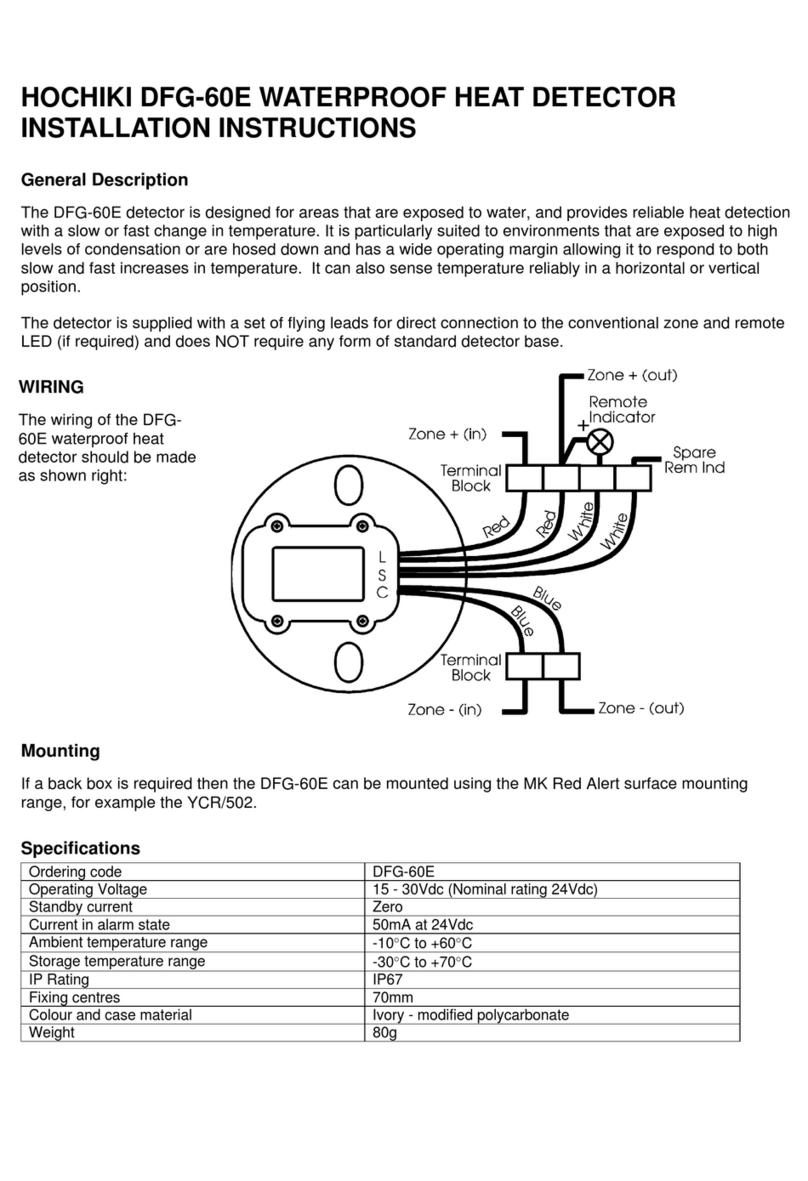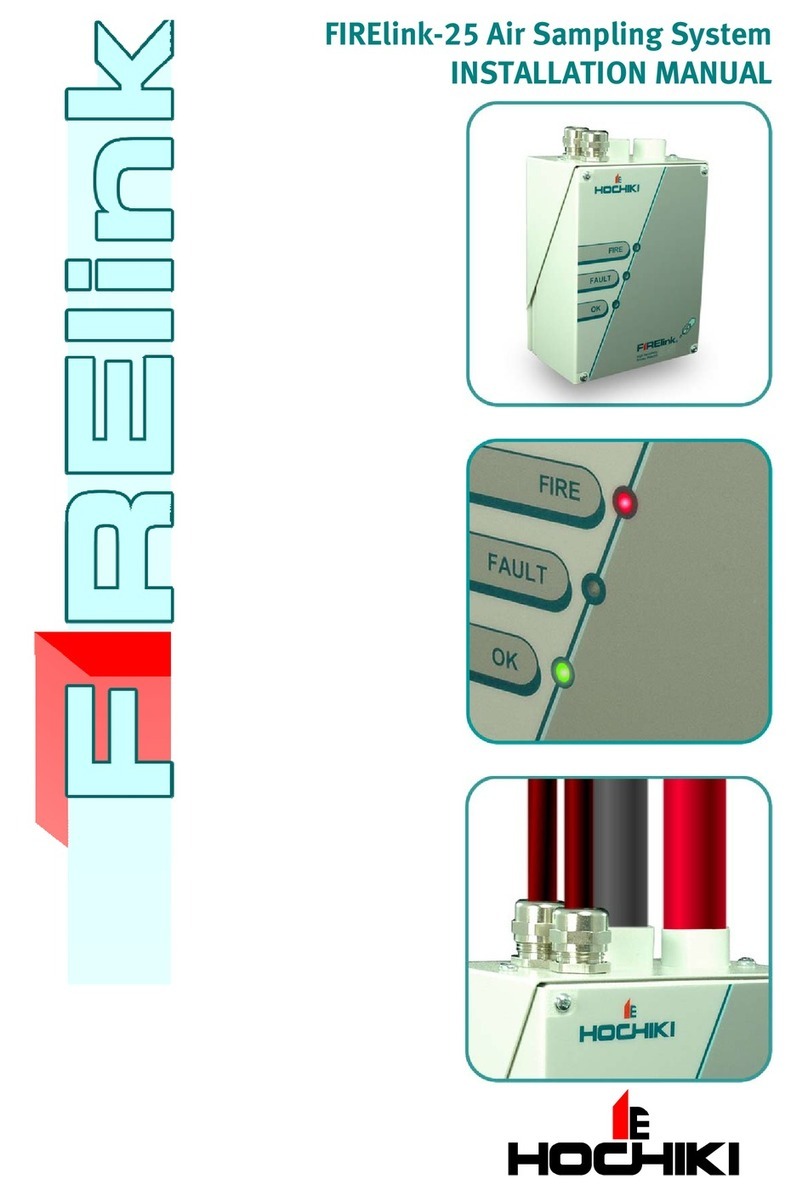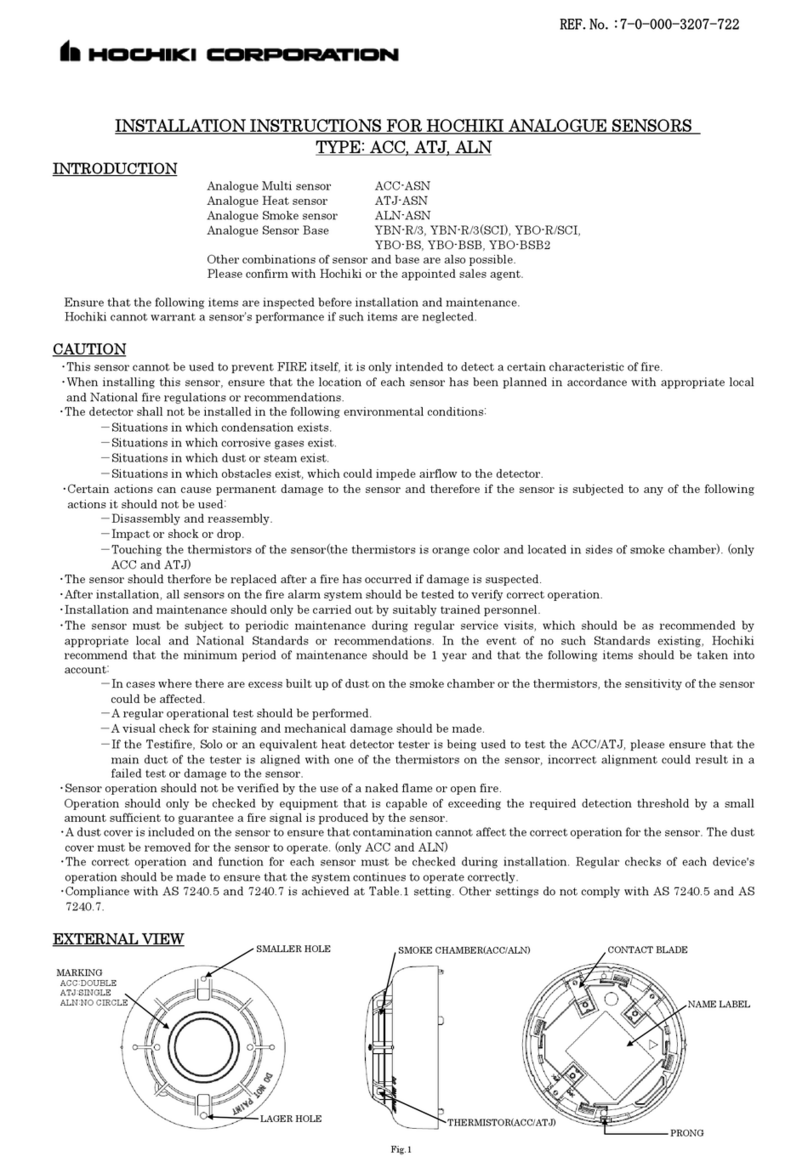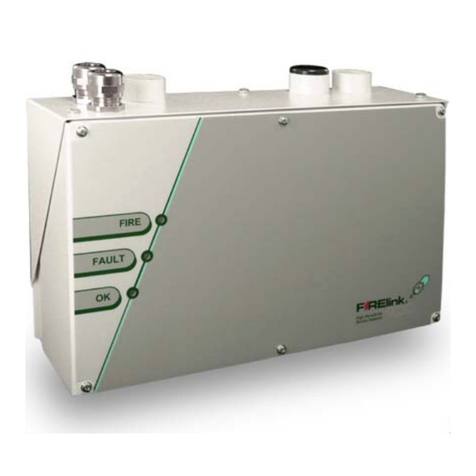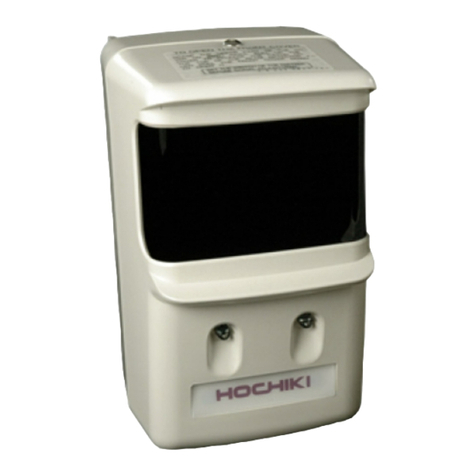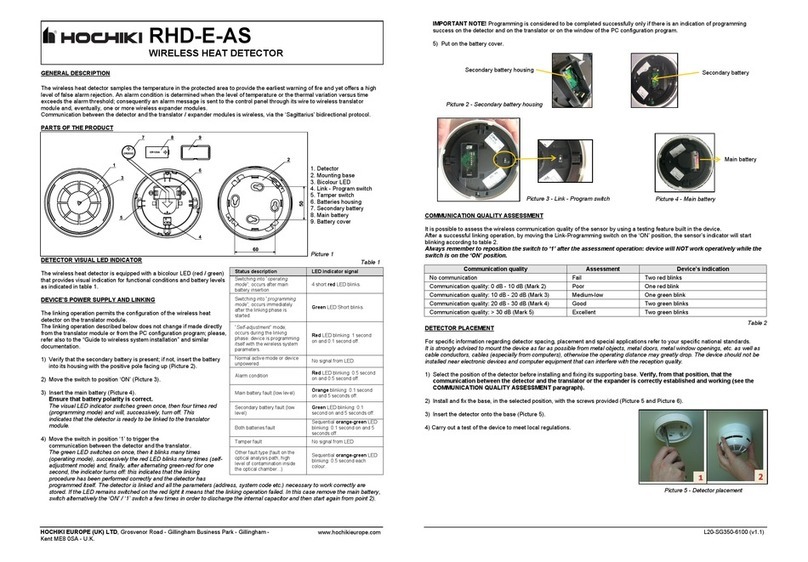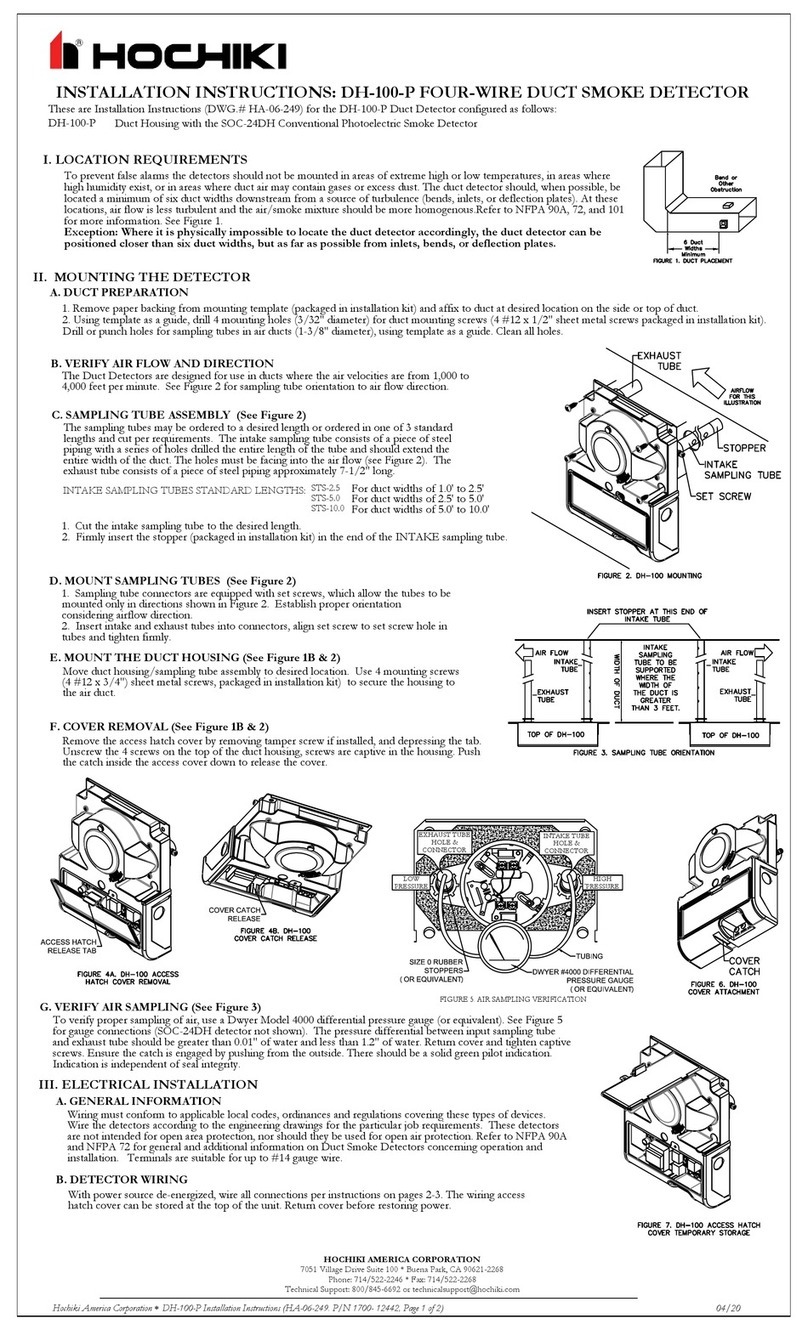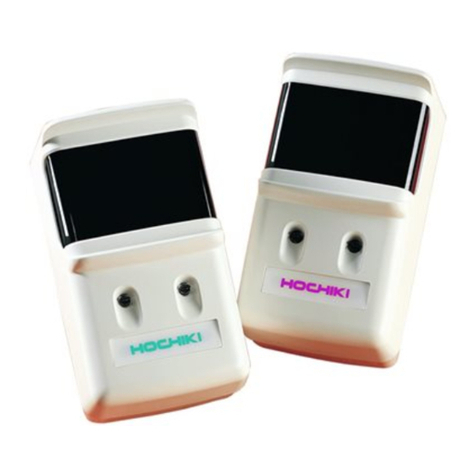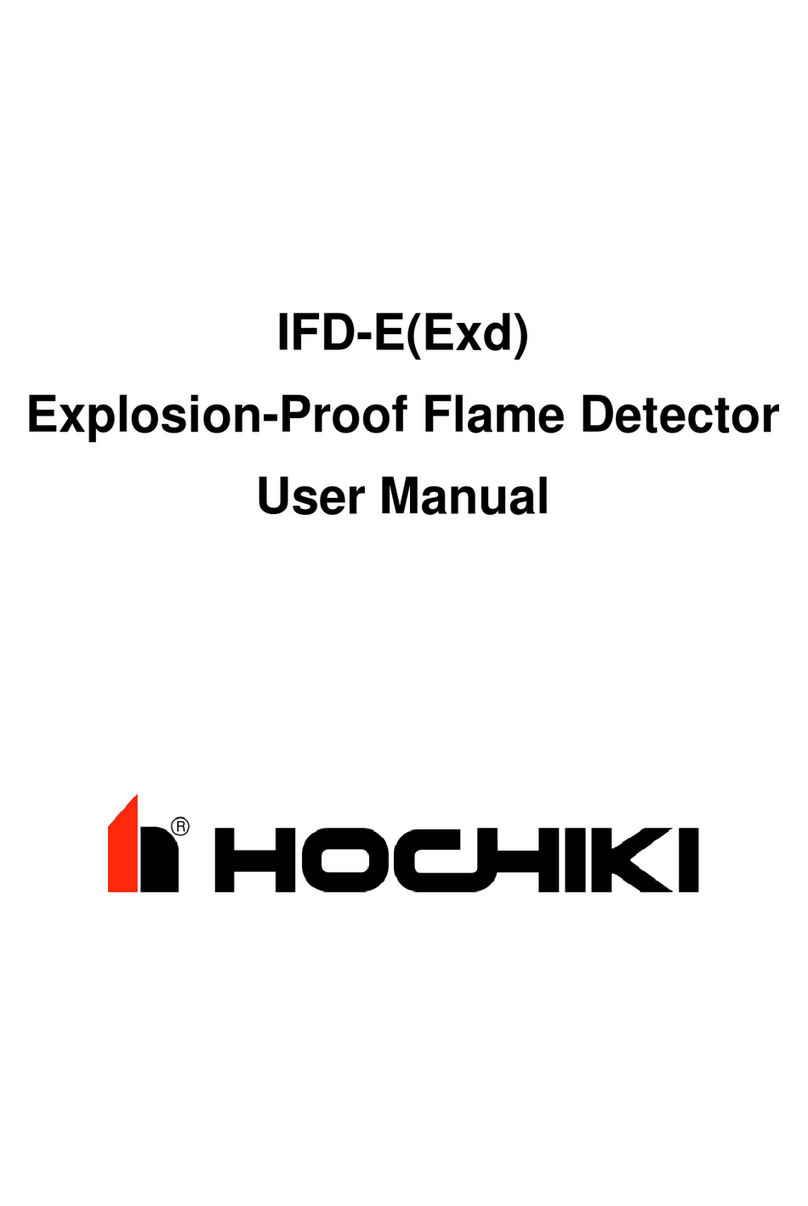
Hochiki Europe (UK) Ltd 9
2-3-0-808/ISS1/APR07
Connection Terminal Descriptions
Terminal No. Mnemonic Function
1 +IN
Power Supply +V. +IN is the power supply input to the flame detector
and is normally 24Vdc with respect to terminal 2. The current
consumption of detector can be monitored to determine the detector
status (Fault, Normal, Pre-alarm, Fire). If the detector is in latching
mode then this supply line must be broken in order to reset the
detector. A thermal fuse within the detector will blow and break the +IN
connection if the detector operating temperature is exceeded.
2 -IN
Power Supply 0V. –IN is the return path for the detector supply current.
-IN is also internally connected to terminal 4.
3 +R
Remote Detector Test Input +V. No connection to +R is necessary if
the detector optical and circuit test feature is not required. If 24Vdc is
applied to terminals 3 and 4 the detector internal optical test sources
will activate to simulate a flame. The detector yellow test LED will
flicker to indicate an optical test is progress. The detector will then
alarm indicating that the test was successful.
4 -R
Remote Detector Test Input 0V. No connection to -R is necessary if the
detector optical and circuit test feature is not required.
-R is internally connected to terminal 2.
5
6
RL1
Flame Relay RL1. This volt free contact is normally open (N/O) and
only closes when a flame has been detected. If the detector is in
latching mode (see DIL switch settings) the contact will remain closed
once a flame has been detected. Only when the detector supply +IN is
broken will the detector reset and the contact open once again. The
contact can be changed to a normally closed (N/C) state by moving the
link on JP1 in the rear of the detector.
Maximum relay contact ratings: Power=3W, Current=0.25Amp,
Voltage=30Vdc. Resistive loads only.
7
8
RL2
Fault or Pre-alarm Relay RL2. This volt free contact is normally closed
(N/C) if the detector has no faults and the supply voltage between
terminals +IN and –IN is the correct value. If the detector mode is
changed (see DIL switch settings) this relay can be de-energised to
reduce the detector current consumption. Alternatively RL2 can be set
to provide a pre-alarm fire signal. The normal contact state can be
changed state by moving the link on JP2 in the rear of the detector.
Maximum relay contact ratings: Power=3W, Current=0.25Amp,
Voltage=30Vdc. Resistive loads only.
Table 2 Connection Terminal Descriptions
